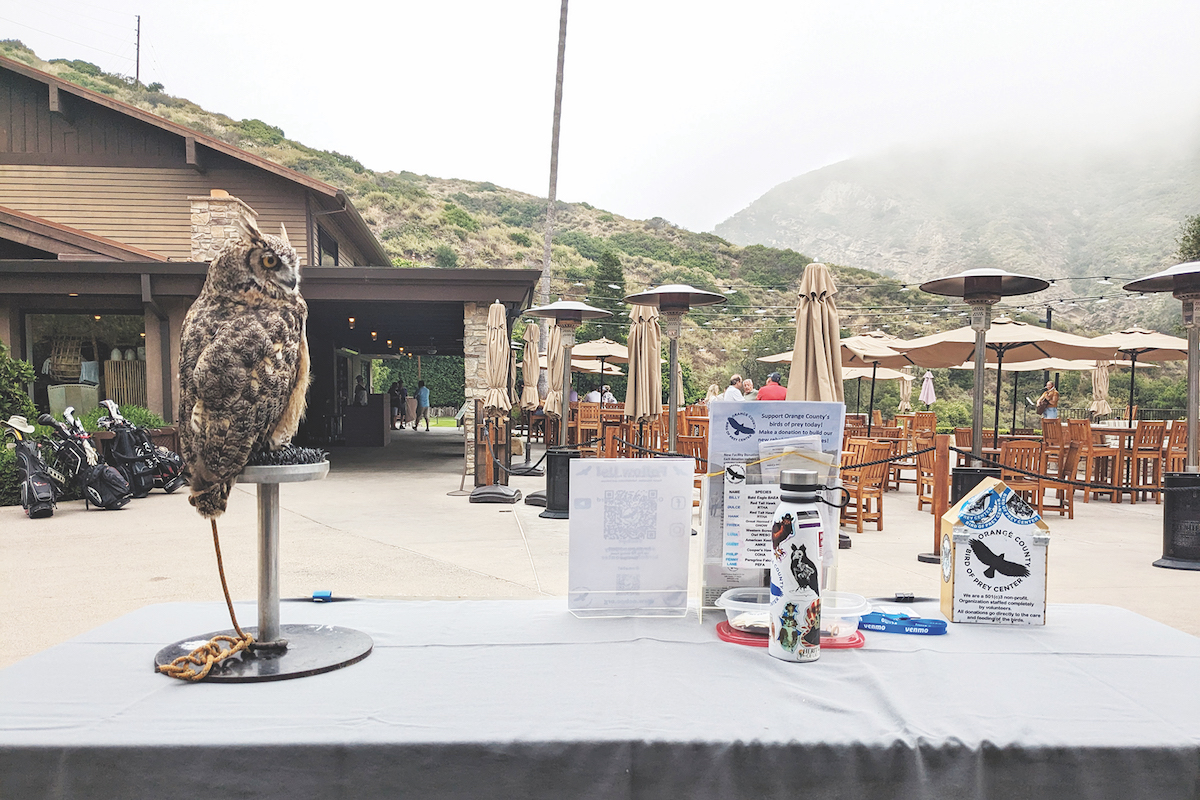
The Orange County Bird of Prey Center offers the chance to get up close and personal with owls, eagles, hawks or other raptors.
By Ashley Ryan
Nestled further inland, hidden among the hills, the Orange County Bird of Prey Center works to rescue and rehabilitate raptors in need. From eagles, owls, falcons and hawks to more rare species like ospreys, vultures and kites, these carnivorous birds have three things in common: sharp talons, a hooked beak and razor-sharp eyesight, all used to hunt.
The nonprofit center got its DIY start in the late 1980s before incorporating in the early 1990s and has existed in a number of configurations ever since. Although the group relies heavily on volunteers, Executive Director Peggy Chase has been involved since the early days and worked hard to land the permanent location that OCBPC moved into around four years ago. With no residential neighbors, the center is the perfect place to keep the animals wild as they undergo treatment.
While the ultimate goal is always to release the birds back into the wild, that is not always possible. Those that are not deemed releasable will journey down one of three paths, either being euthanized, becoming a display bird at a zoo or nature center, or being trained as an education animal. OCBPC usually has around 10 of the latter, deemed Animal Ambassadors, that it showcases at school campuses, community events and more—including interactive presentations on Saturday mornings at The Ranch at Laguna Beach.
“Each week, we bring different birds so you never know exactly which birds you might meet,” says Joanne McDermott, the director of administration for the center. “And you have probably never had a chance to see these beautiful raptors as up close and personal as you will when you meet them at The Ranch.”
Here, she discusses the weekly program and which species you can encounter in Laguna as well as how OCBPC rehabilitates injured raptors at its main site.

Laguna Beach Magazine: What do your weekly presentations at The Ranch at Laguna Beach consist of?
Joanne McDermott: In general, we are there each week with several of our Education Ambassadors to share their stories with the guests at The Ranch. We are happy to answer any questions people have—we love any excuse to talk about our birds, about raptors in general and about what we do.
LBM: Which birds are usually featured in demonstrations?
JM: We currently have 10 different Education Ambassadors—wild-hatched raptors that are non-releasable due to their injuries or behaviors. Typically, we bring two or three birds of different species each week, depending on which birds and which volunteers are available. But, most weeks, you’re likely to see at least a great horned owl or a red-tailed hawk.
LBM: What is your process for rehabilitating raptors at the center?
JM: The treatment plan varies significantly, depending on the nature of the bird’s injury. Once birds arrive at the hospital, they undergo evaluation. Treatments can range from a few days of food and rest all the way to surgery. The final step for most birds, however, is being moved to our main facility, where they are placed in a large enclosure called a flight mew. This space affords the bird the space it needs to fly, which builds up muscle and readies the bird for release.
In the springtime, we often get fledglings that have fallen out of their nests. Before releasing them, we must ensure they can hunt live prey successfully. Flying and hunting are essential to a raptor’s survival in the wild.

LBM: How do you determine when they are ready to be released?
JM: Rehabilitation looks different for each bird. … Sometimes, a bird just needs a few days of good food and rest, and then they’re ready to go. Recently, a golden eagle was brought in by local fishermen who found the juvenile bird floundering in the water 10 miles offshore. After a few days of rest and lots of food, we were able to release the healthy bird. … For injuries such as wing fractures, leg fractures, or other trauma that may require surgery, the rehabilitation time is obviously longer. Some of the signs that a bird is ready for release include healthy weight and strong, sustained flight in the rehabilitation enclosure.
LBM: What should Orange County residents do if they encounter an injured bird of prey?
JM: The best thing to do is contact your local animal control. Their officers are specially trained in how to deal with these animals, which can be dangerous if they are injured and more vulnerable than usual. You should not try to capture an injured raptor or try to care for it yourself. This may end up doing more harm than good.
